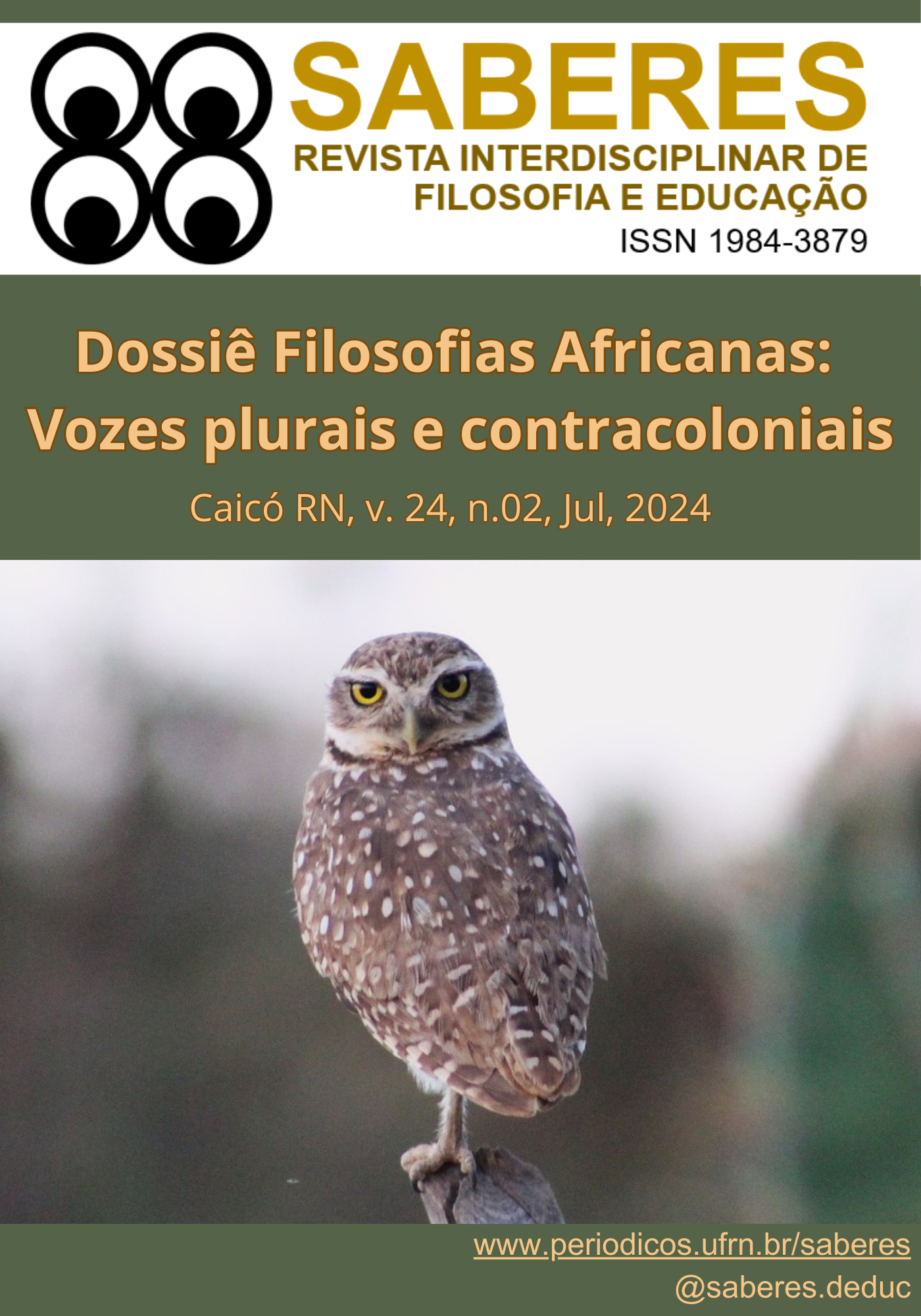FACTORES ASSOCIADOS AO ABANDONO ESCOLAR DA RAPARIGA NO 3º CICLO DO ENSINO BÁSICO NA ESCOLA PRIMÁRIA COMPLETA 25 DE JUNHO, DISTRITO DE NHAMATANDA 2021-2022
DOI:
https://doi.org/10.21680/1984-3879.2024v24n2ID29900Palabras clave:
Keywords: Learning. Dysortography. factors. Difficulty.Resumen
Abstract
This article aims to analyze the factors associated with dysorthography as a specific learning difficulty in students of the 3rd cycle of Basic Education at Escola Primária Completa 25 de Junho. To achieve this objective, we use the following methodologies: mixed research (qualitative and quantitative) bibliographic method, with technical resources, direct observation, interview and questionnaire. Regarding the population and study sample, we had a population of 960 students and 14 teachers, in this context the sample was randomly chosen 100 students (50 boys and 50 girls) aged between 12-14 years and 10 teachers from the Complete Primary School June 25th. The problem in question in this theme is the difficulty of writing, where phonemes are confused, number disagreement, gender, shifted punctuation, junction of words and letters and at the other time omission of some letters in the words. Regarding the main research results, we found in the 3rd cycle of Basic Education at Escola Primária Completa 25 de Junho, factors of the perceptive, intellectual, linguistic, affective-emotional, and pedagogical type. To this end, there is a need to promote training for teachers in terms of cognition and language, differentiated teaching methodologies to improve their practices.
Keywords: Learning. Dysortography. factors. Difficulty.
Descargas
Citas
Afonso, M. L. P. (2010). Disortográfica: compreender para intervir. Dissertação de Mestrado em Ciências da Educação - Especialização em Educação Especial, apresentada à Escola Superior de Educação de Paula Frassinetti, Porto. Disponível em: file:///C:/Users/Jac/Downloads/TM-ESEPF-EE_lurdesafonso2010anexos.pdf
Casal, C. J. F., (2013), Disortografia: A escrita criativa na reeducação da escrita, Porto. Disponível:https://bdigital.ufp.pt/bitstream/10284/4140/1/Carlos%20Casal%20%20Disortografia%20A%20Escrita%20Criativa%20na%20Reeduca%c3%a7%c3%a3o%20da%20Escrita.pdf
Coelho, D.T. (2013). Dificuldades de aprendizagem específicas, dislexia, disgrafia, disortografia e discalculia. Porto, Areal. Disponível em: http://www.ciec uminho.org/documentos/ebooks/2307/pdfs/8%20Inf%C3%A2ncia%20e%20Inclus%C3%A3o/Dislexia.pdf
https://www.nucleodoconhecimento.com.br/educacao/dislexia-disgrafia-disortografica
Lara, E. M. T. (2005 ). Dificuldades de aprendizagem na leitura e escrita, Santa Maria, RS, Brasil
Magalhães, L. F. S. A. P. (2016), Como lidar com a dislexia? intervenção numa criança disléxica, Coimbra.
Oliveira, R. M. A Importância de Analisar as Dificuldades de Aprendizagem no Contexto Escolar – Dislexia, Disgrafia, Disortográfica, Discalculia e Transtorno de Déficit de Atenção e Hiperatividade (TDAH). Revista Científica Multidisciplinar Núcleo do Conhecimento. Disponível em:
Silveira, T. R. (2014), Psicopedagogia: um novo olhar frente à disortografia, Complexo de Ensino Superior de Cachoeirinha. Disponível em: http://www.historialivre.com/revistahistoriador/seis/10tatiana.pdf
Descargas
Publicado
Cómo citar
Número
Sección
Licencia
Derechos de autor 2024 Saberes: Revista Interdisciplinaria de Filosofía y Educación

Esta obra está bajo una licencia internacional Creative Commons Atribución-NoComercial-CompartirIgual 4.0.
Este obra está licenciado com uma Licença Creative Commons Atribuição 4.0 Internacional.
Autores que publicam nesta revista concordam com os seguintes termos:
a. Autores mantém os direitos autorais e concedem à revista o direito de primeira publicação, com o trabalho simultaneamente licenciado sob a Licença Creative Commons Attribution 4.0 que permite o compartilhamento do trabalho com reconhecimento da autoria e publicação inicial nesta revista.
b. Autores têm autorização para assumir contratos adicionais separadamente, para distribuição não-exclusiva da versão do trabalho publicada nesta revista (ex.: publicar em repositório institucional ou como capítulo de livro), com reconhecimento de autoria e publicação inicial nesta revista.
c. Autores têm permissão para publicar e distribuir seu trabalho online (ex.: em repositórios institucionais ou na sua página pessoal) após a publicação inicial nesta revista, já que isso pode gerar alterações produtivas, bem como aumentar o impacto e a citação do trabalho publicado (Veja O Efeito do Acesso Livre).
Foram feitos todos os esforços para identificar e creditar os detentores de direitos sobre as imagens publicadas. Se tem direitos sobre alguma destas imagens e não foi corretamente identificado, por favor, entre em contato com a revista Saberes e publicaremos a correção num dos próximos números.


 English
English Español (España)
Español (España) Português (Brasil)
Português (Brasil)



